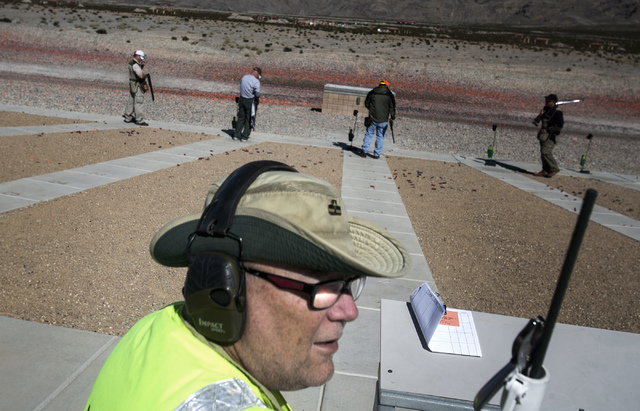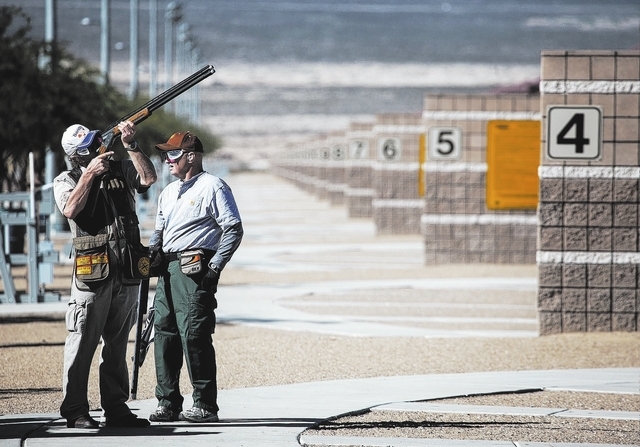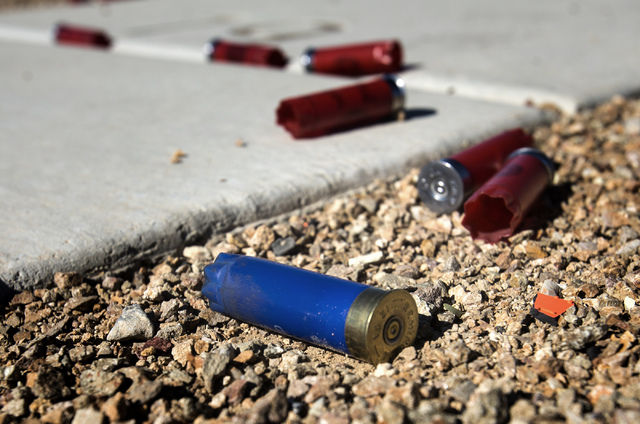County commissioners look to stop shooting park money drain
So far, the Clark County Shooting Complex is misfiring on its goal to financially break even.
The county-run facility became fully operational in 2010 with ranges for rifle and pistol shooting, archery and skeet and trap areas. From the very beginning, county officials have had the goal of the complex paying for itself eventually.
That aspiration has remained elusive. This fiscal year, which started in July, the county for the first time didn’t give the shooting complex any subsidy during budget planning.
The complex isn’t meeting that goal yet this year. Between the three-month period of July through September, the complex lost $244,520. Revenues were $385,988.35 while expenses were $630,508, according to income statements.
The condition has prompted county officials to retool the complex’s operations with an eye toward marketing improvements and trimming expenses. County commissioners will have a presentation and discussion about the complex Tuesday.
“There was always the idea that the park was going to break even,” said Jane Pike, the county parks and recreation director. “The reality is it’s difficult for a public facility that is trying to operate at a minimal cost to our public to break even.”
Some changes have already started. On Friday, reduced winter hours began at the complex. It’s now open on Wednesdays from 8 a.m. to 10 p.m. From Thursdays to Sundays, it is open from 8 a.m. to 5 p.m. That’s a 16-hour-a-week reduction for the winter.
The reduction is intended to help the complex save on staffing and utility costs, with less lighting used for evening shooting activities.
Part-timers now work, on average, 12.5 hours a week instead of 18 hours. Part-time staffers also have shouldered hourly pay cuts. Instead of earning a range of $9 to $15 an hour, they now earn $9 to $11, a change that started in October.
The reduced part-time salaries will bring an estimated $350,000 in savings this fiscal year.
For other efforts, such as the reduction in lighting, the utility savings are harder to predict.
In the last four fiscal years, the shooting complex has lost a total of $2.85 million. Those losses have varied from year to year. The highest loss was $1.1 million in fiscal year 2013, while the lowest was $367,992 in fiscal year 2012. The 2013 figure is an unaudited estimate.
The efforts toward solvency aren’t all about cuts, either. Officials also are looking for ways to draw in more people, and boost revenues. Part of that is retooling marketing and working with the Las Vegas Convention and Visitors Authority.
In addition, the complex also is examining ways to increase its volunteer force, Pike said.
Already, the complex allows volunteers to use recreational-vehicle space at the facility in exchange for 15 hours a week of work. That work can include maintenance or assisting along firing lines.
That effort is expanding to get more local volunteers who aren’t in RV spaces.
The park also has expanded this year, adding sporting clays for shooters.
Complex manager Steve Carmichael said that starting up more leagues is another effort in the works.
Leagues are a good way for participants to form teams and bring in more shooters, he said, adding that they also provide a good venue for beginners.
The complex, due to its location north of Las Vegas, has struggled to cash in significantly on the 40 million people who visit the valley annually.
He said drawing individual tourists remains a challenge, given the distance and transportation costs for visitors.
“One of the biggest hindrances has been the distance from the Strip and the distance from downtown,” Carmichael said. “We really haven’t worked out a transportation system from the Strip or downtown.”
With groups of shooters coming up from the Strip, it’s easier. Arrangements can be made for a van, or a casino-hotel will transport groups of high-rollers to the complex.
Carmichael noted the past year also was exacerbated by a national ammunition shortage, which makes it challenging and more costly for shooters to get supplies.
Elected officials have varied views of the complex and whether its finances need a look. A central part of the debate is whether the complex should be viewed like a traditional park subsidized with taxpayer money, or a facility that should be financially successful.
Commissioner Tom Collins, a big supporter of the complex, is upset with Sisolak for bringing up the issue. The complex is in Collins’ district.
“This should not even be on the agenda,” Collins said. “This is Commissioner Sisolak stirring up (expletive).”
He said the complex brings enjoyment to firearms owners in the county, as well as visitors.
“It enhances the entire county and tourism,” Collins said.
Commission Chairman Steve Sisolak said county staff brought the losses to officials’ attention. He said a discussion about the complex, particularly the marketing, is needed so the county can improve the finances.
Sisolak, unlike Collins, draws a distinction between traditional parks provided to residents and the complex.
“It’s different from Sunset Park,” Sisolak said. “It was meant to be a sustainable venture, and we need to get it to that point.”
Contact reporter Ben Botkin at bbotkin@reviewjournal.com or 702-405-9781. Follow him on Twitter @BenBotkin1.























